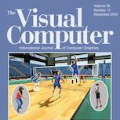Recently there has been significant interest in measuring time-varying functional connectivity (TVC) between different brain regions using resting-state functional magnetic resonance imaging (rs-fMRI) data. One way to assess the relationship between signals from different brain regions is to measure their phase synchronization (PS) across time. However, this requires the \textit{a priori} choice of type and cut-off frequencies for the bandpass filter needed to perform the analysis. Here we explore alternative approaches based on the use of various mode decomposition (MD) techniques that circumvent this issue. These techniques allow for the data driven decomposition of signals jointly into narrow-band components at different frequencies, thus fulfilling the requirements needed to measure PS. We explore several variants of MD, including empirical mode decomposition (EMD), bivariate EMD (BEMD), noise-assisted multivariate EMD (na-MEMD), and introduce the use of multivariate variational mode decomposition (MVMD) in the context of estimating time-varying PS. We contrast the approaches using a series of simulations and application to rs-fMRI data. Our results show that MVMD outperforms other evaluated MD approaches, and further suggests that this approach can be used as a tool to reliably investigate time-varying PS in rs-fMRI data.
翻译:最近,人们非常有兴趣使用休眠状态功能磁共振成像(rs-fMRI)数据测量不同大脑区域之间时间变化的功能连接(TVC)数据。评估不同大脑区域信号之间关系的一种方法是测量其阶段同步(PS)时间跨度。然而,这要求为进行分析所需的带宽过滤器选择类型和截断频率。我们在这里探索基于使用绕过这一问题的各种模式分解(MV)技术的替代方法。这些技术可以使数据驱动的信号联合分解成不同频率的窄带组件,从而满足测量PS的要求。我们探索了多种MD的变体,包括实验模式分解(EMD)、双变 EMD(BEMD)、噪声辅助多变式 EMD(na-MEMD),以及采用多变式变式调模式解析(MVMMD)方法(MVMD-MD),我们用一系列的模拟和应用方法对比了数据,我们用这种模拟和应用的方法可以将数据转化为显示为MDMRI工具。我们的成果显示,可以将这种数据用于进一步的变。



